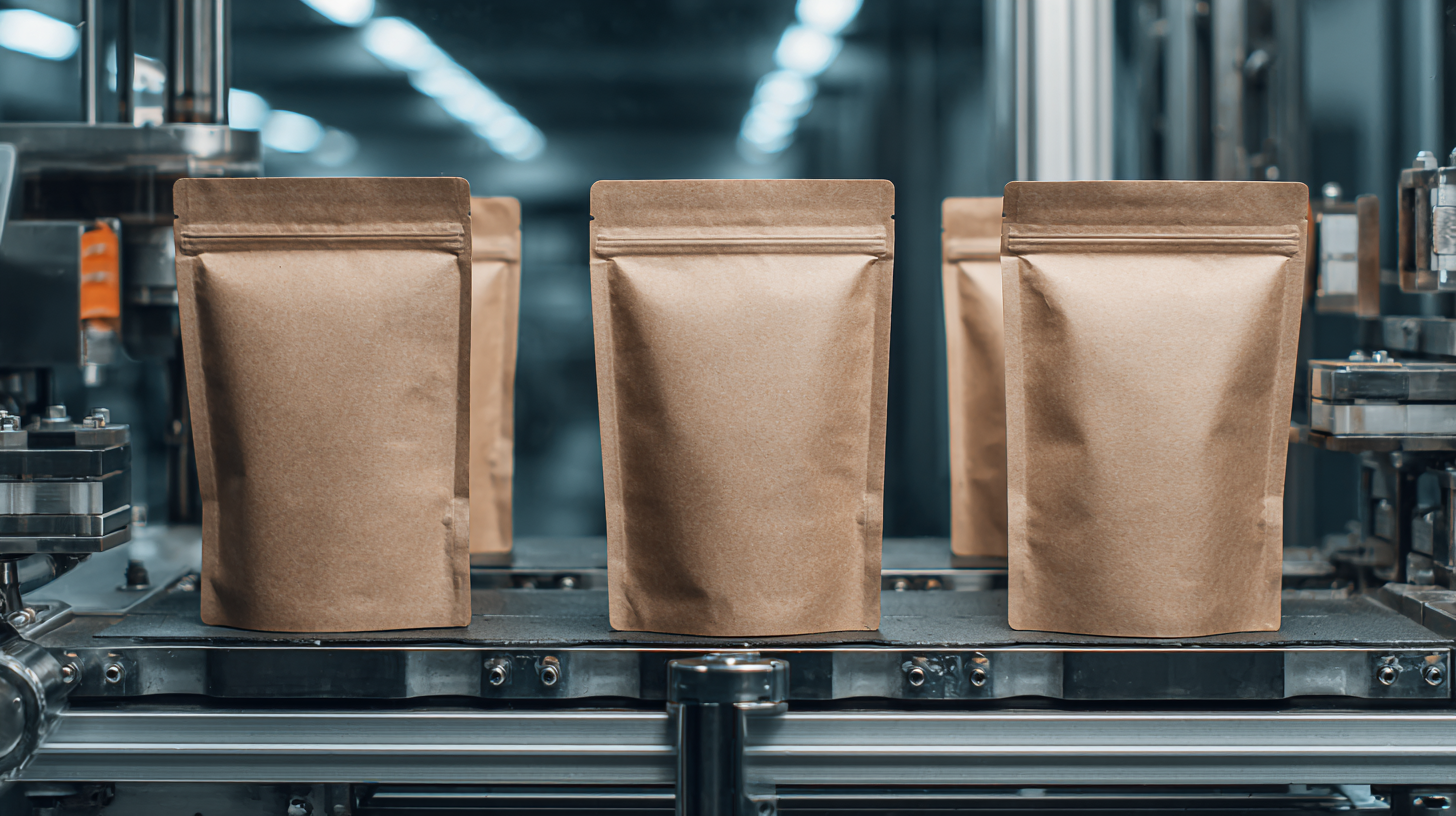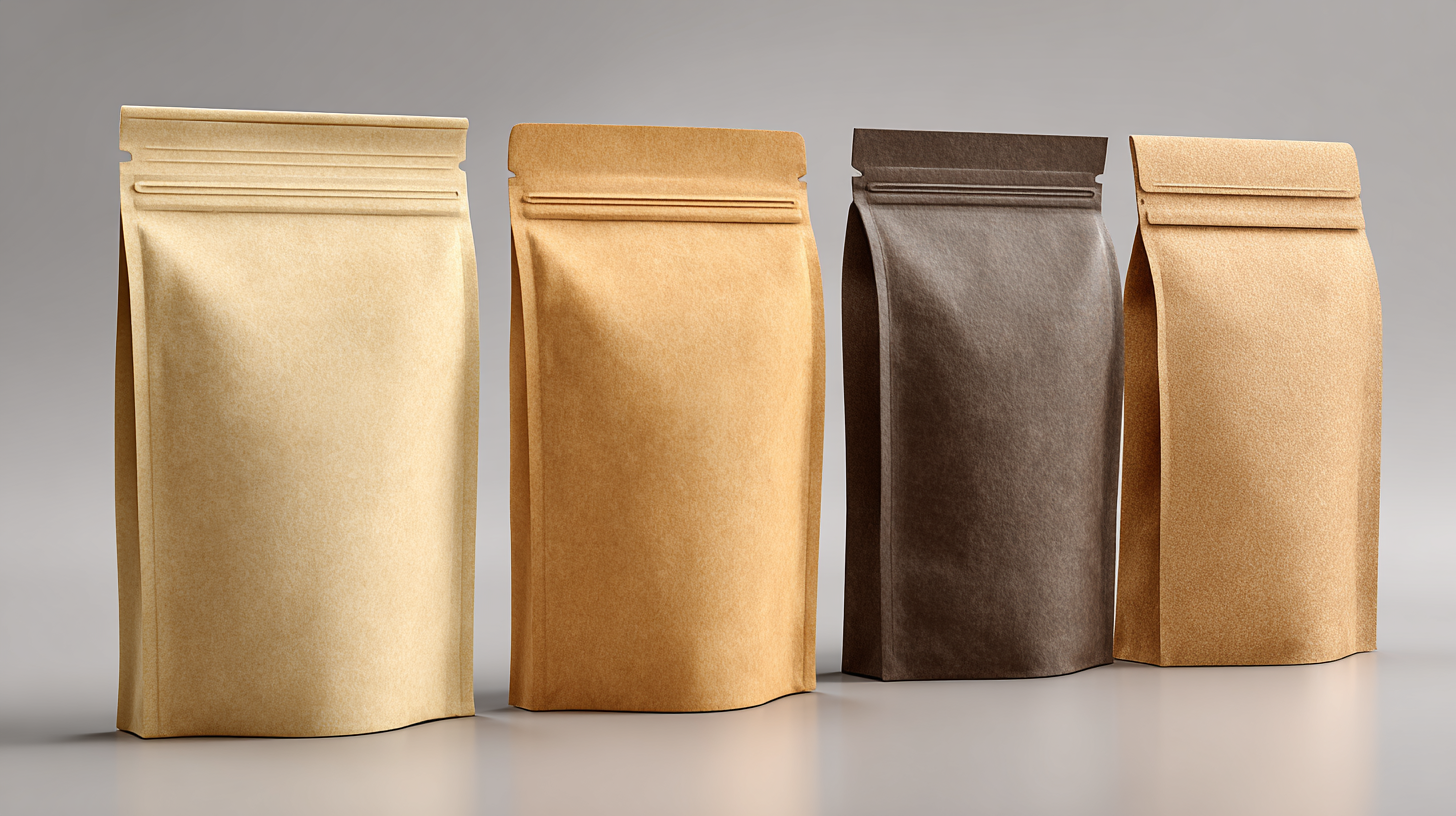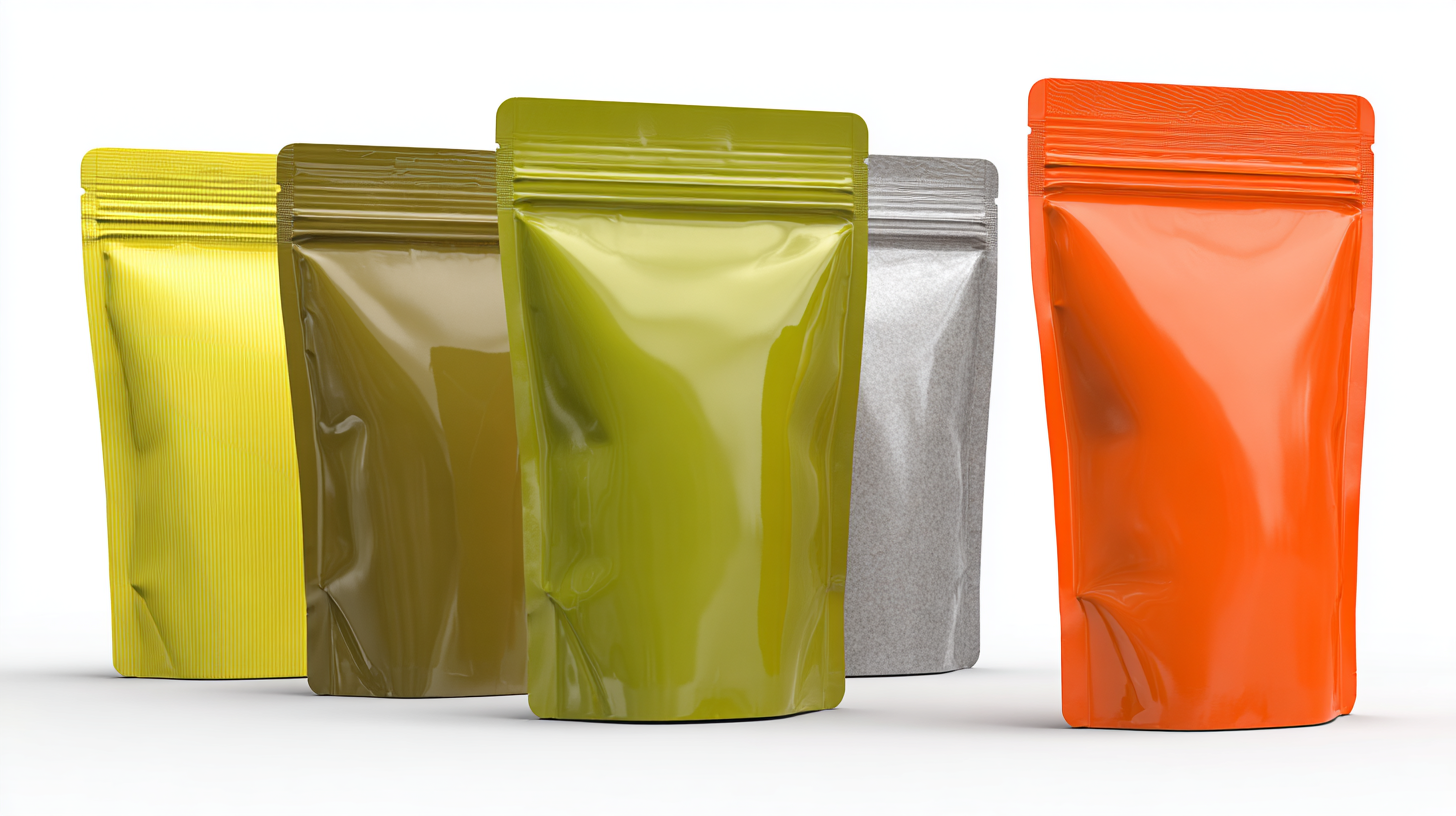Innovative Alternatives for Best Pouch Packaging in 2025 Technology Evolution
The pouch packaging industry is undergoing a significant transformation, driven by technological advancements and evolving consumer preferences. According to a recent report by Smithers Pira, the global flexible packaging market, which includes pouch packaging, is projected to reach $300 billion by 2025. This growth is fueled by the increasing demand for convenient, lightweight, and sustainable packaging solutions across various sectors, including food, beverages, and personal care. As manufacturers strive to meet these demands, selecting a high-quality pouch packaging manufacturer becomes critical. This blog will explore innovative alternatives in pouch packaging and provide a comparative analysis of leading manufacturers, helping businesses navigate the complexities of technology evolution in this dynamic market.

Emerging Trends in Pouch Packaging Technology for 2025
As the pouch packaging industry embraces the future, the integration of cutting-edge technologies is set to transform how we design and produce packaging solutions. With a particular focus on 2025, we explore the top nine drivers of Packaging 4.0, including Artificial Intelligence (AI), the Internet of Things (IoT), blockchain, and robotics. These technologies not only enhance operational efficiency but also promote sustainability, responding to the growing demand for eco-friendly practices.
One prominent trend is the utilization of AI to optimize supply chain operations. AI algorithms can predict consumer behavior and streamline inventory management, reducing waste and ensuring that products reach consumers more efficiently. Additionally, IoT devices enable real-time monitoring of packaging conditions, ensuring quality while minimizing resource use.
For businesses looking to stay ahead in the evolving pouch packaging market, consider these tips: invest in smart technologies that enhance traceability, utilize data analytics to understand market trends, and prioritize sustainable materials to meet consumer expectations. Embracing these innovations will help businesses navigate the projected 5.2% CAGR growth in the Nordic pouch packaging market from 2025 to 2034, ensuring they remain competitive in this dynamic landscape.
Sustainable Materials: The Future of Eco-Friendly Pouches
As the demand for eco-friendly packaging solutions continues to rise, the evolution of sustainable materials for pouch packaging is set to revolutionize the industry by 2025. According to a report by Smithers Pira, the global flexible packaging market is projected to reach $300 billion by 2025, with sustainability as a key driver of growth. Companies are increasingly shifting towards biodegradable and recyclable materials to meet consumer preferences for environmentally conscious products. Innovations such as plant-based bioplastics are paving the way for pouches that decompose naturally, reducing landfill waste significantly.
Tip: Opt for pouches made of materials like cornstarch or sugarcane, which not only have lower carbon footprints but also provide excellent barrier properties to keep products fresh. Furthermore, brands should consider using water-based inks and adhesives to further enhance the eco-friendliness of their packaging.
Additionally, the rise of technologies such as digital printing is facilitating customization and reducing waste in the production process. This shift allows brands to create tailored packaging solutions without the excess costs or environmental impact associated with traditional methods. By 2025, we can expect to see more brands committing to circular economy practices, where materials are reused and recycled efficiently.
Tip: When designing packaging, keep in mind that minimalist designs can reduce material usage and lower environmental impacts while maintaining visual appeal. Engaging consumers in sustainability can also enhance brand loyalty and recognition.
Innovative Alternatives for Best Pouch Packaging in 2025 Technology Evolution - Sustainable Materials: The Future of Eco-Friendly Pouches
| Material Type | Sustainability Rating | Biodegradability (Years) | Recyclability (%) | Cost per Unit ($) |
|---|---|---|---|---|
| PLA (Polylactic Acid) | High | 1-3 | 90 | 0.30 |
| NatureFlex | Very High | 2-4 | 85 | 0.50 |
| Kraft Paper | Medium | 6-12 | 100 | 0.20 |
| Recycled PET | High | 20+ | 75 | 0.40 |
| Mushroom Packaging | Very High | 1-3 | 90 | 0.70 |
Innovative Design Features Enhancing User Experience in Pouches
In 2025, the evolution of pouch packaging is set to embrace innovative design features that significantly enhance user experience. As consumers increasingly prioritize functionality and sustainability, pouch designs will incorporate advanced materials and smart technology. Enhanced sealing mechanisms and user-friendly spouts are expected to make these pouches more functional, allowing for easier pouring and resealing, which is essential for on-the-go lifestyles.

Moreover, the aesthetic appeal of pouches will also take center stage, with brands experimenting with vibrant colors, customizable designs, and eco-friendly materials to cater to diverse consumer preferences. This aligns with recent trends highlighting the importance of bags as fashion accessories rather than mere functional items.
As we move towards 2025, pouch packaging will not only serve practical purposes but will also offer a stylish and sustainable choice, reflecting the evolving values of consumers who seek both beauty and utility in everyday products.
Smart Packaging Solutions: Integration of IoT in Flexible Packaging
The evolution of packaging technology is increasingly intertwined with the Internet of Things (IoT), heralding a new era of smart packaging solutions. In the flexible packaging sector, IoT integration allows for real-time monitoring and enhanced interactivity between products and consumers. Smart pouches equipped with sensors can track freshness, detect tampering, or even provide consumers with information on how to recycle the packaging effectively. This level of engagement not only elevates the user experience but also enhances supply chain transparency.
As we look towards 2025, the potential of IoT in flexible packaging is boundless. Brands can leverage data collected from smart packaging to gain valuable insights into consumer behavior and preferences. This information can inform product development, optimize inventory management, and reduce waste, aligning perfectly with sustainability goals. Moreover, by incorporating QR codes and NFC technology, consumers can engage directly with products, accessing detailed usage instructions, promotional content, or recycling tips. The shift towards smart pouch packaging not only fulfills a growing consumer demand for convenience and transparency but also positions brands at the forefront of innovative packaging solutions.

Cost-Efficiency Strategies for Adopting Advanced Pouch Packaging
As we step into 2025, the evolution of pouch packaging technology presents innovative opportunities for businesses. Embracing advanced pouch packaging not only enhances product presentation but also provides significant cost-efficiency benefits. By investing in these innovative materials and designs, companies can optimize their supply chains and reduce waste, ultimately leading to higher profit margins.
Tips for adopting advanced pouch packaging include evaluating the total cost of ownership rather than just the upfront price. Focusing on sustainable materials can also offer long-term cost savings while appealing to eco-conscious consumers. Another strategy is to collaborate with packaging suppliers to customize solutions that fit specific product needs, ensuring both efficiency and functionality.
Moreover, utilizing advanced printing technologies can improve brand visibility without adding substantial costs. Implementing automation in packaging processes can help streamline operations, reduce labor costs, and increase speed to market. By strategically adopting these technologies, businesses can position themselves competitively while reaping the financial rewards of advanced packaging solutions.
